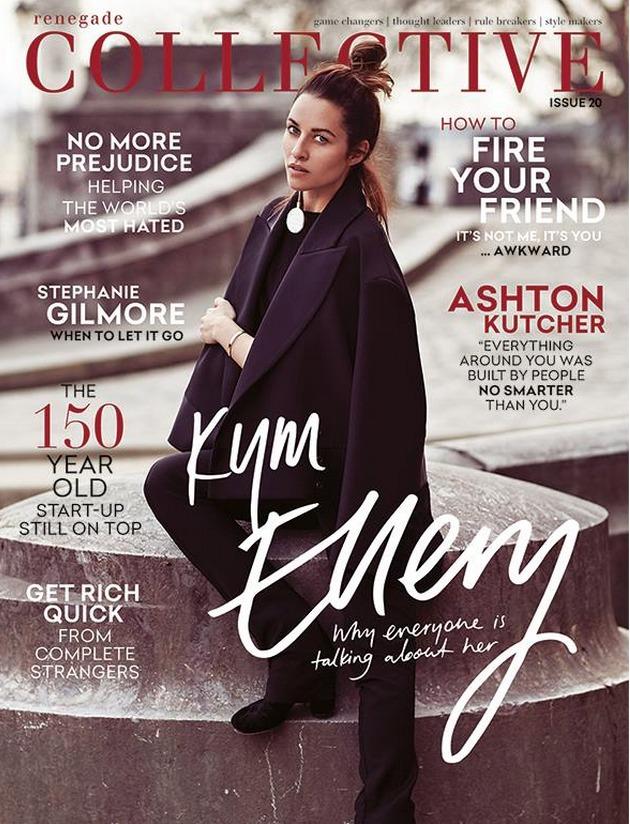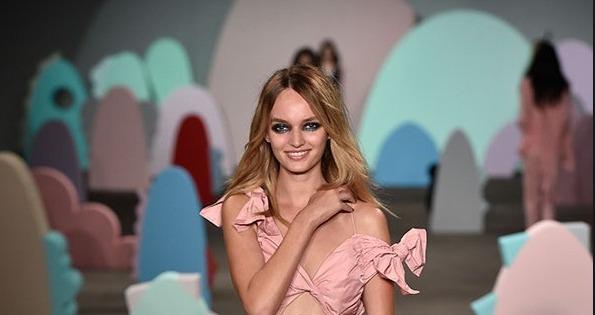First published in Renegade Collective, April 2015.
To sit front row at an Alice McCall runway show is to understand that those who dismiss fashion as frivolous radically underestimate the power of fantasy. During Mercedes-Benz Fashion Week Australia (MBFWA) last year, the London-born designer, who got her start when Kate Moss started championing her range of one-off silk tops and who designed for Sass & Bide before launching her own label in 2004, outfitted models in everything from lemon-yellow jumpsuits that could have been lifted from the wardrobe of a ‘seventies heiress to swing dresses featuring signature details such as perforated bodices and scalloped hems. The collection, which played out against a cloud-like installation by theatre maestro Alice Babidge, might have commemorated Alice’s tenth year in the business but it also proved that the designer owes her staying power to our ability to buy into her vision – one where femininity isn’t complete without a rock n’ roll edge.
If this looks effortless, it’s just another fashion world illusion. Although Alice, who’s in the process of finalising her SS 15/16 collection, is one of the few working Australian designers who enjoys icon status she’s quick to admit that she was once almost a casualty of her own success.
“I learnt so much two or three years into the business where I felt like I really lost control,” says Alice, whose CV includes stints styling for cult magazines like I-D and The Face in the nineties and whose popularity with celebrities like Moss, Chloe Sevigny and Diane Kruger, sparked unprecedented demand for her brand during its formative years. “Writing a solid business plan is really key. It’s really important to focus on projected growth in terms of both the number of styles you present and the amount of stockists you have. If you grow too quickly, it can really be detrimental to your business.”
These days, Alice, who oversees four flagship boutiques in Sydney and Melbourne and supplies to David Jones, ASOS, Harvey Nichols and Japanese department store Beams, relies on a trusted team of advisors and pours her energy into designing pieces that achieve the blend of versatility and inventiveness that her customers want.
“I’ve learnt that you can’t think about your own ego or do something just for the sake of doing it – understanding the margins on a product and doing costings on everything you make at an early stage is critical,” she explains. “Although I’m the creative director, I have a general manager who’s amazing as well as a great financial team to take care of the paperwork and the invoices. There’s so much that happens across the back end of the business and that just isn’t my strength. Employing staff who are professionally experienced is one of the best things that I’ve done.”
Becky Cooper and Bridget Yorsen relate to this sentiment. The design duo, who met while studying fashion at the University of Technology Sydney in 2000, launched their label Bec and Bridge at the New Generation show at MBFWA in 2004 and attracted over 40 US stockists within one year of operating in the states, thanks to their knack for designing pieces that combine classic silhouettes with breezy sophistication, believe that it’s essential to build a team that believes in what you do.
“It’s all about nurturing your team,” says Bridge. “Keeping them motivated and passionate about your brand is really important. You have to employ people who share your vision,” says Bridge. For Bec, this extends to cultivating strong ties with everyone from stockists and suppliers to more experienced industry peers. “Be really respectful of everybody no matter what your working relationship is with them,” she adds. “A simple premise like respecting your elders and showing that respect from the top really does impact your whole company.”
Bec and Bridge, who supply pieces to over 250 boutiques and online stores in the US and count Bloomingdales, Sak’s Fifth Avenue and David Jones as part of their stockist stable, attribute their growth to business acumen and entrepreneurial instinct just as much as design nous.
“Because our brand has always treaded that fine line between aspirational and commercial fashion, we have to plan our shows really carefully and make sure we make our pieces accessible to our customer even if we’re pushing boundaries,” says Bridge, adding that ideas for some of the pair’s most innovative pieces come the night before a show. “We try to not ever become complacent – there’s so much information at our fingertips these days with social media so there’s no excuse to not stay on top of it. You can’t get too precious with your business. If you risk being precious about things, you don’t open yourself up to what the market may want. Don’t be too hard on yourself when you have to follow a certain formula.”
For Aje, a Sydney label that’s an amalgam of the names of it’s founders, ex-Russh magazine stylist Edwina Robinson and Adrian Norris, who studied Fine Art in Venice, creativity and commerce go hand-in-hand. Edwina says that her label’s emphasis on laid-back glamour – the kind that often calls for luxurious fabrics, careful embellishment and organic fibres – means that prioritising factors such as production cost and logistics is more important than ever.
“The designs have to be commercially viable,” explains Edwina, who launched Aje with Norris in 2007 and has since swapped a wholesale focus to launch four standalone retail stores and a fifth slated for Sydney’s Strand Arcade. “I think when you start out as creatives, you have so many amazing ideas and pieces that you want to make but not everything is versatile, wearable or able to be worn effortlessly. Being careful with every dollar is a good thing – when you start succeeding, there’s a lot of money coming in but there’s also a lot of money going out and you need to watch that.”
Edwina says that MBFWA is an opportunity to engage with customers while telling the story behind her brand. “We always make sure that those watching our show enter an Aje world and we offer the audience the chance to buy direct from the runway if we have products in store,” she says. “It’s also lets us show consistency as well as innovation in very collection. Your brand needs to be constantly evolving but there should also be a certain essence that people recognise as yours.”
As the industry grapples with fallout from a tough retail climate and the rise of new technology, this ability to articulate your distinctive vision in a way that resonates with your customer may be your best chance at staying the course.
“The quality has to be high, the fit has to be impeccable and customers need to know your point of difference,” smiles Alice. “We have 11 years of history and there’s a lot of longevity in that. People can recognise an Alice McCall product and the business has just grown stronger and stronger.”

